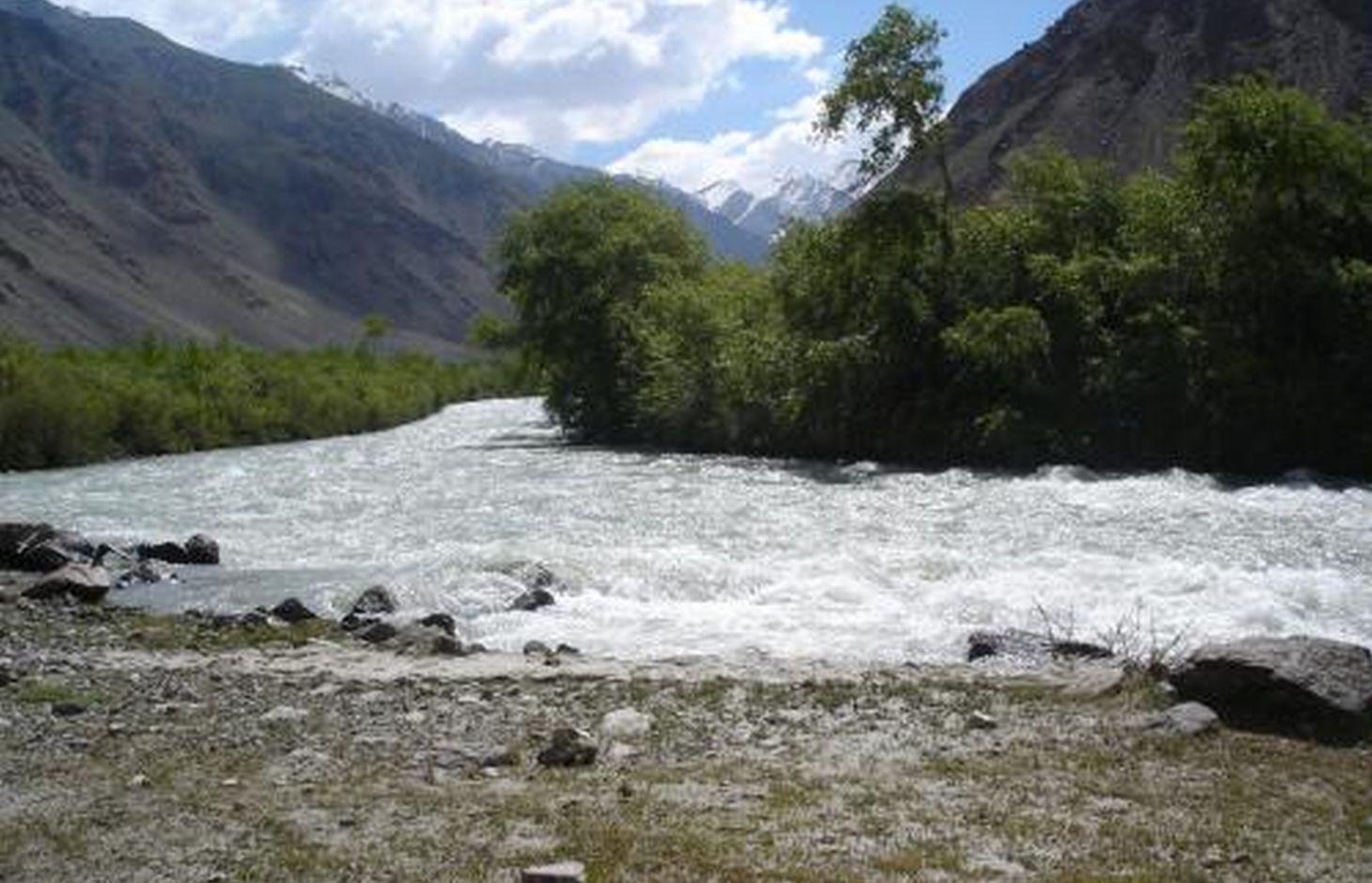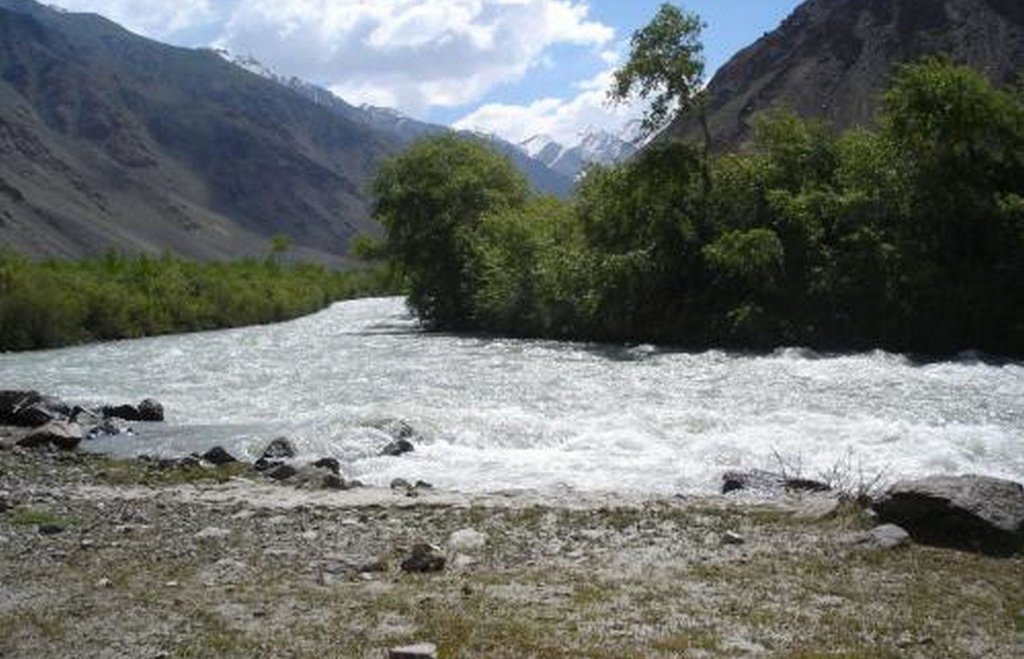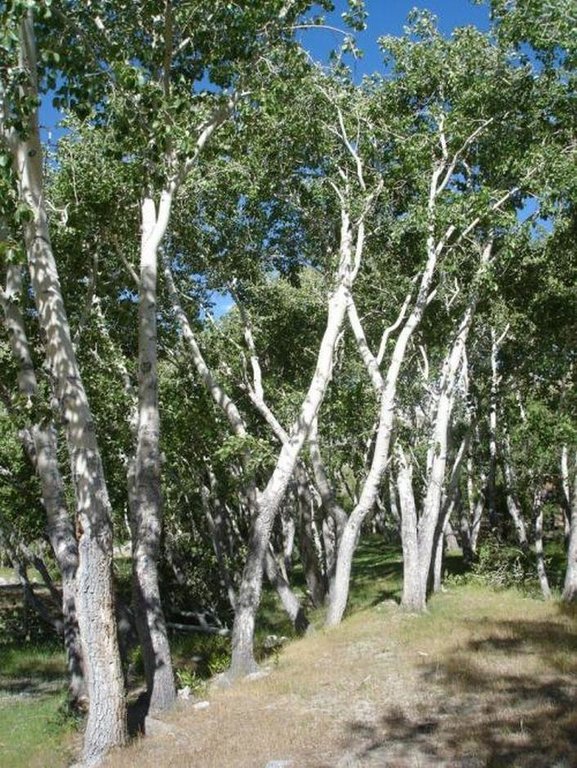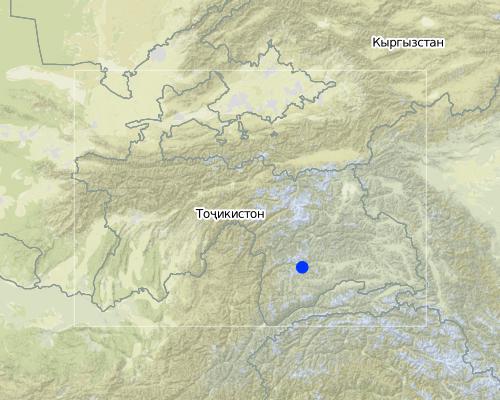Planting poplar forest in the flood plains of high mountain river areas [塔吉克斯坦]
- 创建:
- 更新:
- 编制者: Gulniso Nekushoeva
- 编辑者: –
- 审查者: David Streiff
Буньедкардани чакалакзор дар сохили даръехои баландкух (tajik)
technologies_1515 - 塔吉克斯坦
- Planting poplar forest in the flood plains of high mountain river areas: March 15, 2017 (inactive)
- Planting poplar forest in the flood plains of high mountain river areas: July 20, 2017 (inactive)
- Planting poplar forest in the flood plains of high mountain river areas: July 22, 2017 (inactive)
- Planting poplar forest in the flood plains of high mountain river areas: Aug. 21, 2019 (public)
查看章节
全部展开 全部收起1. 一般信息
1.2 参与该技术评估和文件编制的资源人员和机构的联系方式
local community:
Jonbekov Ikbol
+992 93 458 50-56
塔吉克斯坦
有助于对技术进行记录/评估的机构名称(如相关)
Institute for Environment and Human Security, United Nations University (Institute for Environment and Human Security, United Nations University) - 德国有助于对技术进行记录/评估的机构名称(如相关)
UNEP (UNEP) - 肯尼亚有助于对技术进行记录/评估的机构名称(如相关)
UNDP/GEF Project Uzbekistan (UNDP/GEF Uzbekistan) - 乌兹别克斯坦有助于对技术进行记录/评估的机构名称(如相关)
Tajik Soil Insitute (Tajik Soil Institute) - 塔吉克斯坦有助于对技术进行记录/评估的机构名称(如相关)
Tajik Academy of Agricultural Sciences (Tajik Academy of Agricultural Sciences) - 塔吉克斯坦1.3 关于使用通过WOCAT记录的数据的条件
(现场)数据是什么时候汇编的?:
09/07/2010
编制者和关键资源人员接受有关使用通过WOCAT记录数据的条件。:
是
2. SLM技术的说明
2.1 技术简介
技术定义:
The afforestation of the low productivity sandy lands in the river valley areas of arid highlands with fast growing poplar trees, provides the population with firewood as well as timber and also provides conservation benefits.
2.2 技术的详细说明
说明:
In the Jamoat Vankala area of the Shugnan district in GBAO, low temperatures make it very difficult to grow fruit or trees other than poplar (Populus pamirico) or Salix Schugnanica Coerz.
The natural forest consists mainly of the latter and this grows very slowly. It is very cold for 6-7 months of the year in this region, so the demand for cheap firewood to heat homes is extremely high.
In the 1980s, the sovhoz decided to transform 10ha of a low productivity pasture land into more productive irrigated forest land. After the collapse of the Soviet system, the Jamoat rented this forest land to a farmer, who still remains in charge of this piece of land.
Purpose of the Technology: The creation of a poplar forest on the river shore in this treeless desert alpine zone can go someway towards meeting the local's demand for firewood. It can provide cheap timber and environmental benefits as well as a pleasant environment.
Establishment / maintenance activities and inputs: The process of establishing this poplar forest began with the creation of irrigation canals and the planting of seedlings. In the first few years, the seedlings had to be watered frequently due to the thirsty sandy soils.
Other factors that needed to be considered were protecting the area from grazing cattle, watering areas around the forest away from the the river bank, the selective felling of some poplars, the additional planting of trees on barren soil, as well as the protection of the forest from predatory deforestation by the locals (which has increased during the economic crisis). Thanks to natural regeneration processes, farmers can now prepare firewood for the winter and do not have to bring the timber from far away.
Natural / human environment: 88% of the Pamir region is covered by glaciers, snow, and rocks, and is thus completely devoid of soil. Consequently, the area of arable and orchard lands in the GBAO region is only about 2%, with a forest area of 0.4%. Two-thirds of all the Pamir natural forests are located along the river banks of the Vanch, Gunt, Tokuzbulak, and others, at an altitude of 3200m.
In the narrow V-shaped valleys of the Western Pamirs, the lowest points are at an altitude of 1,200m,extending up to the highest points at 7,400m. This explains the climatic differences within the region, because the lower parts in the valleys enjoy a warmer climate than the higher parts. Overall, the annual average air temperature in the region is 9°C, and most rainfall occurs between the winter and spring periods with an average precipitation of 191-227mm.
2.3 技术照片
2.5 已应用该技术的、本评估所涵盖的国家/地区/地点
国家:
塔吉克斯坦
区域/州/省:
Tajikistan / GBAO
有关地点的进一步说明:
Shugnan / Vankala
Map
×2.6 实施日期
如果不知道确切的年份,请说明大概的日期:
- 10-50年前
2.7 技术介绍
详细说明该技术是如何引入的:
- 通过土地使用者的创新
注释(项目类型等):
During the 1980s much of the low productivity sandy land was converted to poplar forest. This was initiated by a local group who put in many voluntary hours. From 1993 onwards, this forest was part of the local jamoat "Vankala" lands. The local administration rented it to a local farmer- (Jonbekov Ikbol).
3. SLM技术的分类
3.1 该技术的主要目的
- 减缓气候变化及其影响
- 创造有益的经济影响
3.2 应用该技术的当前土地利用类型

森林/林地
(半天然)天然森林/林地:
- 选伐
植树造林:
- 单一栽培的本地品种
产品和服务:
- 木材
- 薪材
- 放牧/啃牧
- 自然保持/保护
- 娱乐/旅游
- 自然灾害防护
注释:
Major land use problems (compiler’s opinion): The main problems include; Low soil productivity, a short growing season, desertification, low temperatures and a sharp drop in average daily temperatures and an early night frost. Very sparse vegetation of drought-tolerant grass and little shrubs
Major land use problems (land users’ perception): water shortages, low soil fertility, low yields
Selective felling of (semi-) natural forests: Every autumn
Plantation forestry: Every year they plant new seedlings to assist with afforestation
Forest products and services: timber, fuelwood, grazing / browsing, nature conservation / protection, recreation / tourism, protection against natural hazards
Future (final) land use (after implementation of SLM Technology): Forests / woodlands: Fp: Plantations, afforestations
Type of cropping system and major crops comments: The farmer owns 1-2 of his own cows which graze in the forest over the smmer. They use these cows for milk. The cows are not allowed to roam free, they are tied up. Someimes the children try to sell milk and dairy products on the roadside, but there is not much passing trade.
Livestock is grazing on crop residues
如果由于技术的实施而导致土地用途发生变化,则在技术实施前说明土地利的用途。:
Grazing land: Ge: Extensive grazing land
3.3 有关土地利用的更多信息
该技术所应用土地的供水:
- 充分灌溉
注释:
Water supply: Also mixed rainfed
具体说明:
Longest growing period in days: 120 longest growing period from month to month: May- September
3.4 该技术所属的SLM组
- 改良的地面/植被覆盖
- 减少基于生态系统的灾害风险
3.6 包含该技术的可持续土地管理措施

农艺措施
- A1:植被和土壤覆盖层

植物措施
- V1:乔木和灌木覆盖层

结构措施
- S3:分级沟渠、渠道、水道

管理措施
- M1:改变土地使用类型
注释:
Main measures: vegetative measures, management measures
Secondary measures: structural measures
Type of vegetative measures: in blocks
3.7 该技术强调的主要土地退化类型

土壤水蚀
- Wt:表土流失/地表侵蚀

化学性土壤退化
- Cn:肥力下降和有机质含量下降(非侵蚀所致)

生物性退化
- Bc:植被覆盖的减少
- Bq:数量/生物量减少
注释:
Main type of degradation addressed: Cn: fertility decline and reduced organic matter content, Bc: reduction of vegetation cover, Bq: quantity / biomass decline
Secondary types of degradation addressed: Wt: loss of topsoil / surface erosion
Main causes of degradation: deforestation / removal of natural vegetation (incl. forest fires) (24hr electricity has been available only for the last 2 years. Over the last 16 years the local population have cut down all the surrounding trees.), over-exploitation of vegetation for domestic use (All the trees were cut down for use as animal feed and fire wood.), overgrazing (Livestock were grazed in the areas around the village all year round.), change in temperature (The summeres have become colder in recent years, the summer became more colder, most of crops ripen at low temperatures), poverty / wealth (most of the population are poor, thus placing high pressure on the natural reasources as they are forced to use these for fuel and food.)
Secondary causes of degradation: droughts (Low levels of rain fall, strong сold winds, high insolaton, low soil moisture), war and conflicts (During the civil war the area had high rates of food insecurity.)
3.8 防止、减少或恢复土地退化
具体数量名该技术与土地退化有关的目标:
- 减少土地退化
- 修复/恢复严重退化的土地
注释:
Secondary goals: prevention of land degradation
4. 技术规范、实施活动、投入和成本
4.2 技术规范/技术图纸说明
Technical knowledge required for field staff / advisors: low
Technical knowledge required for land users: moderate (Needs to use chainsaws so some extra technical knowledge required.)
Main technical functions: improvement of ground cover, increase in organic matter, increase of biomass (quantity), spatial arrangement and diversification of land use
Secondary technical functions: improvement of topsoil structure (compaction), improvement of subsoil structure (hardpan), stabilisation of soil (eg by tree roots against land slides), increase in nutrient availability (supply, recycling,…), increase / maintain water stored in soil, reduction in wind speed, promotion of vegetation species and varieties (quality, eg palatable fodder)
Aligned: -contour
Vegetative material: T : trees / shrubs
Aligned: -graded strips
Vegetative material: T : trees / shrubs
In blocks
Vegetative material: T : trees / shrubs
Number of plants per (ha): 400
Vertical interval within rows / strips / blocks (m): 5
Width within rows / strips / blocks (m): 5
Vegetative measure: Vegetative material: T : trees / shrubs
Vegetative measure: Vegetative material: T : trees / shrubs
Vegetative measure: Vegetative material: T : trees / shrubs
Vegetative measure: Vegetative material: T : trees / shrubs
Trees/ shrubs species: Populus pamirico, Salix Schugnanica Coerz, dog rose
Grass species: different natural grasses
Slope (which determines the spacing indicated above): 5.00%
Structural measure: main irrigation canal along the plot upper border
Depth of ditches/pits/dams (m): 0.5
Width of ditches/pits/dams (m): 0.8
Length of ditches/pits/dams (m): 2000
Structural measure: irrigation networks inside the forest
Vertical interval between structures (m): 5
Spacing between structures (m): 5
Depth of ditches/pits/dams (m): 0.2
Width of ditches/pits/dams (m): 0.3
Length of ditches/pits/dams (m): 200000
Slope (which determines the spacing indicated above): 5%
If the original slope has changed as a result of the Technology, the slope today is: 5%
Change of land use type: low-productivity grasslands have changed to a high productive poplar forest
Change of land use practices / intensity level: Changed from an area of open access to locals, to having controlled access (pasture land, forest land)
4.3 有关投入和成本计算的一般信息
其它/国家货币(具体说明):
Somoni
注明美元与当地货币的汇率(如相关):1美元=:
4.53
注明雇用劳工的每日平均工资成本:
30
4.4 技术建立活动
| 活动 | 措施类型 | 时间 | |
|---|---|---|---|
| 1. | Growing seedlings in a nursery | 植物性的 | one year (5 month irrigation) |
| 2. | Digging holes 50x60cm on 1 ha - 400 on 10 hectares - 4000 holes | 植物性的 | During Spring |
| 3. | Manure (dung) | 植物性的 | in Spring |
| 4. | Delivering of manure to plot by tractor and truck | 植物性的 | in Spring |
| 5. | Prepare a mixture of soil and dung for filling planting holes on 10 ha | 植物性的 | in Spring |
| 6. | Planting poplar seedlings and watering them | 植物性的 | in Spring |
| 7. | Planting trees along the irrigation canal along the road to Jelondi and the upper boundaries of the site (10m on 1day) | 结构性的 | before tree planting in spring |
| 8. | Establishment of irrigation networks from the canal in the garden(7x 1000м per day) | 结构性的 | before tree planting in spring |
| 9. | Collection of sea buck thorn stems and branches | 管理 | before tree planting |
| 10. | Load sea buck thorn stems and branches into the car and unloadthem | 管理 | before tree planting |
| 11. | Delivering stems and branches using a car | 管理 | before tree planting |
| 12. | Fencing the area | 管理 | before trees planting |
4.5 技术建立所需要的费用和投入
| 对投入进行具体说明 | 单位 | 数量 | 单位成本 | 每项投入的总成本 | 土地使用者承担的成本% | |
|---|---|---|---|---|---|---|
| 劳动力 | Growing seedlings in a nursery (irrigation and nursering) | Persons/day | 25.0 | 30.0 | 750.0 | 100.0 |
| 劳动力 | Digging holes | Persons/day | 100.0 | 30.0 | 3000.0 | 100.0 |
| 劳动力 | Prepare a mixture of soil and dung | Persons/day | 40.0 | 30.0 | 1200.0 | 100.0 |
| 劳动力 | Planting poplar seedlings and watering them | Persons/day | 40.0 | 30.0 | 1200.0 | 100.0 |
| 设备 | Tractor for delivering manure | hours | 8.0 | 75.0 | 600.0 | 100.0 |
| 设备 | Labour: Planting trees along the irrigation canal | Persons/day | 200.0 | 30.0 | 6000.0 | 100.0 |
| 设备 | Labour: Establishment of irrigation networks from the canal in the garden | Persons/day | 30.0 | 30.0 | 900.0 | 100.0 |
| 设备 | Car for transporting branches | Trucks/day | 20.0 | 100.0 | 2000.0 | 100.0 |
| 肥料和杀菌剂 | Manure (dung) | tons | 40.0 | 50.0 | 2000.0 | 100.0 |
| 其它 | Labour: Collection of sea buck thorn stems and branches | Persons/day | 20.0 | 30.0 | 600.0 | 100.0 |
| 其它 | Labour: Load sea buck thorn stems and branches into the car and unload them | Persons/day | 10.0 | 30.0 | 300.0 | 100.0 |
| 其它 | Labour: Fencing the area | Persons/day | 100.0 | 30.0 | 3000.0 | 100.0 |
| 技术建立所需总成本 | 21550.0 | |||||
4.6 维护/经常性活动
| 活动 | 措施类型 | 时间/频率 | |
|---|---|---|---|
| 1. | Watering seedlings 2 times per week first year (40 pers days on 1 month - 10 ha) | 植物性的 | 5 months per year |
| 2. | Watering seedlings once per week per year (20 pers days -1 month- 10 ha) | 植物性的 | 5 months per year |
| 3. | Protection, avoidance of grazing(5 hour per day) | 植物性的 | 5 months per year |
| 4. | Annual harvest of firewood | 植物性的 | every year/autumn |
| 5. | Selective felling of trees(Ø=40-50см) | 植物性的 | After 10 years / October |
| 6. | Annual haymaking of natural grass | 植物性的 | every year/summer |
| 7. | Repairs and cleaning of the main irrigation canal to clear sediment and debris | 结构性的 | Before the irrigation season/in spring |
| 8. | Repairs and cleaning of the irrigation network to clear sediment and brancheson 10 ha | 结构性的 | Before the irrigation season in spring |
| 9. | Repairing fences | 管理 | if needed |
4.7 维护/经常性活动所需要的费用和投入(每年)
| 对投入进行具体说明 | 单位 | 数量 | 单位成本 | 每项投入的总成本 | 土地使用者承担的成本% | |
|---|---|---|---|---|---|---|
| 劳动力 | Watering seedlings (First year and followin year) | Persons/day | 300.0 | 30.0 | 9000.0 | 100.0 |
| 劳动力 | Protection, avoidance of grazing | Persons/day | 87.0 | 30.0 | 2610.0 | 100.0 |
| 劳动力 | Annual harvest of firewood | Persons/day | 10.0 | 30.0 | 300.0 | 100.0 |
| 劳动力 | Selective felling of trees (after 10 years | Persons/day | 15.0 | 30.0 | 450.0 | |
| 其它 | Labour: Annual haymaking of natural grass | Persons/day | 40.0 | 30.0 | 1200.0 | |
| 其它 | Labour: Repairs and cleaning of the main irrigation canal abd irrigation network | Persons/day | 15.0 | 30.0 | 450.0 | |
| 技术维护所需总成本 | 14010.0 | |||||
注释:
Machinery/ tools: shovel
The costs were calculated for the whole plantation area of 10 ha
4.8 影响成本的最重要因素
描述影响成本的最决定性因素:
Labour is the most determinate factor affecting the costs, however, in this situation, most of it was provided by the land users themselves. Costs reported are those for additional labour that would need to be paid for.
5. 自然和人文环境
5.1 气候
年降雨量
- < 250毫米
- 251-500毫米
- 501-750毫米
- 751-1,000毫米
- 1,001-1,500毫米
- 1,501-2,000毫米
- 2,001-3,000毫米
- 3,001-4,000毫米
- > 4,000毫米
有关降雨的规范/注释:
200-230 mm average rainfall. Main season is during winter to spring period.
农业气候带
- 干旱
Thermal climate class: boreal
In general, the Pamirs are is characterised by dry air and low precipitation
5.2 地形
平均坡度:
- 水平(0-2%)
- 缓降(3-5%)
- 平缓(6-10%)
- 滚坡(11-15%)
- 崎岖(16-30%)
- 陡峭(31-60%)
- 非常陡峭(>60%)
地形:
- 高原/平原
- 山脊
- 山坡
- 山地斜坡
- 麓坡
- 谷底
垂直分布带:
- 0-100 m a.s.l.
- 101-500 m a.s.l.
- 501-1,000 m a.s.l.
- 1,001-1,500 m a.s.l.
- 1,501-2,000 m a.s.l.
- 2,001-2,500 m a.s.l.
- 2,501-3,000 m a.s.l.
- 3,001-4,000 m a.s.l.
- > 4,000 m a.s.l.
说明该技术是否专门应用于:
- 凹陷情况
关于地形的注释和进一步规范:
Altitudinal zone: 3200 m a.s.l.
Slopes on average: It is a narrow river valley
5.3 土壤
平均土层深度:
- 非常浅(0-20厘米)
- 浅(21-50厘米)
- 中等深度(51-80厘米)
- 深(81-120厘米)
- 非常深(> 120厘米)
土壤质地(表土):
- 粗粒/轻(砂质)
表土有机质:
- 中(1-3%)
如有可能,附上完整的土壤描述或具体说明可用的信息,例如土壤类型、土壤酸碱度、阳离子交换能力、氮、盐度等。:
Soil depth on average: The soil is sandy-loam, shallow, with low productivity
Soil texture: Sandy-loamy soil
These soils have low natural fertility, and irrigation increases the productivity of this soil
Topsoil organic matter: After irrigation and changing the land use type, organic matter increases
Soil drainage / infiltration is good because this soil is sandy-loam
Soil water storage capacity is low because this soil is sandy-loam
5.4 水资源可用性和质量
地下水位表:
< 5米
地表水的可用性:
好
水质(未处理):
良好饮用水
关于水质和水量的注释和进一步规范:
Ground water table: 2/3 of the forest is close to the river and the ground water level is 2-3m
Availability of surface water: The River Tokuzbulak is in close proximity (somtimes also just medium)
Water quality (untreated): The river can provide clean drinking water
5.5 生物多样性
物种多样性:
- 高
关于生物多样性的注释和进一步规范:
Poplar trees provide a favourable microclimate for growing many bushes and herbaceous plants beneath, and also provides a good natural habitat for birds and some wild animals.
5.6 应用该技术的土地使用者的特征
生产系统的市场定位:
- 生计(自给)
- 混合(生计/商业
非农收入:
- > 收入的50%
相对财富水平:
- 丰富
个人或集体:
- 个人/家庭
机械化水平:
- 手工作业
性别:
- 女人
- 男人
说明土地使用者的其他有关特征:
Land users applying the Technology are mainly Leaders / privileged
Population density: < 10 persons/km2
Annual population growth: 2% - 3%
10% of the land users are rich (He has a car, big forest plot, 5 yaks, 2 cows, 20 sheep).
Off-farm income specification: The farmer owns a car, sometimes he works as a tour gide, he sells the timber and firewood, and in autumn he buys meat in Murgab to resell in Khatlon.
Market orientation of production system: subsistence (self-supply), mixed (subsistence/ commercial, mixed (subsistence/ commercial
Market orientation of production system: In the first 7 years subsistence and after 7-10 years some of the trees had reached maturity, the rest he sold (20-30m3). ( In the autumn haymaking and firewood (10m3) for himself and 3 cars (30m3) firewood for sale)
Level of mechanization: Watering, pruning of poplars, haymaking is all manual
5.7 应用该技术的土地使用者拥有或租用的平均土地面积
- < 0.5 公顷
- 0.5-1 公顷
- 1-2 公顷
- 2-5公顷
- 5-15公顷
- 15-50公顷
- 50-100公顷
- 100-500公顷
- 500-1,000公顷
- 1,000-10,000公顷
- > 10,000公顷
这被认为是小规模、中规模还是大规模的(参照当地实际情况)?:
- 中等规模的
注释:
At 1-2 ha: The area of crop land in the Western Pamirs is very small.
At 2-5 ha: This farmer has 3 ha of crop land because there is a small population in this village.
At 0.5-1 ha the population is more dense.
Also 5-15 ha, but it is rare that one individual farmer is rented such a large area of forest.
5.8 土地所有权、土地使用权和水使用权
土地所有权:
- 州
土地使用权:
- 租赁
用水权:
- 自由进入(无组织)
注释:
before 1992-93 it was the Sovhoz forest land, after 1993 the forest was in the Vankala Jamoat. The farmer rents this land.
5.9 进入服务和基础设施的通道
健康:
- 贫瘠
- 适度的
- 好
教育:
- 贫瘠
- 适度的
- 好
技术援助:
- 贫瘠
- 适度的
- 好
就业(例如非农):
- 贫瘠
- 适度的
- 好
市场:
- 贫瘠
- 适度的
- 好
能源:
- 贫瘠
- 适度的
- 好
道路和交通:
- 贫瘠
- 适度的
- 好
饮用水和卫生设施:
- 贫瘠
- 适度的
- 好
金融服务:
- 贫瘠
- 适度的
- 好
6. 影响和结论性说明
6.1 该技术的现场影响
社会经济效应
生产
饲料生产
注释/具体说明:
natural grass under the trees
饲料质量
注释/具体说明:
More grasses and edible plants grow under the shadow of the trees.
畜牧生产
注释/具体说明:
more furaj more animals
木材生产
SLM之前的数量:
10%
SLM之后的数量:
100%
能源生产
SLM之后的数量:
100%
收入和成本
农业收入
注释/具体说明:
More animals and firewood that he can sell.
收入来源的多样性
注释/具体说明:
He can sell firewood, meat, dairy products, and can be a touris guide.
社会文化影响
食品安全/自给自足
娱乐机会
SLM之前的数量:
5%
SLM之后的数量:
100%
注释/具体说明:
The environmnt looks much more pleasant with more green areas.
SLM/土地退化知识
冲突缓解
注释/具体说明:
The area is too big for one farmer
Livelihood and human well-being
注释/具体说明:
The extra money earned from the sale of timber, firewood and livestock can be spent on health and education for the family
生态影响
土壤
土壤水分
注释/具体说明:
Reduces evaporation from the soil surface
土壤覆盖层
注释/具体说明:
good vegetation cover helps improve the soil cover
土壤流失
注释/具体说明:
The trees and grass roots stabilise the soil
养分循环/补给
注释/具体说明:
Matter and roots of the herbaceous plants, improves structure and fertility of the soil
土壤有机物/地下C
注释/具体说明:
SOM is increased underneath the poplar forest
生物多样性:植被、动物
生物量/地上C
植物多样性
注释/具体说明:
The diversity of plants is higher than in the surrounding areas
动物多样性
注释/具体说明:
Provides a habitat for more wild animals.
有益物种
注释/具体说明:
Good microclimate and protection for them
栖息地多样性
注释/具体说明:
Good microclimate and protection for them
减少气候和灾害风险
碳和温室气体的排放
注释/具体说明:
carbon sis stored within the high amounts of biomass
风速
注释/具体说明:
tall trees provide wind barrier
其它生态影响
Bio energy generation
6.2 该技术的场外影响已经显现
下游洪水
对邻近农田的破坏
6.3 技术对渐变气候以及与气候相关的极端情况/灾害的暴露和敏感性(土地使用者认为的极端情况/灾害)
渐变气候
渐变气候
| 季节 | 气候变化/极端天气的类型 | 该技术是如何应对的? | |
|---|---|---|---|
| 年温度 | 增加 | 不好 |
气候有关的极端情况(灾害)
气象灾害
| 该技术是如何应对的? | |
|---|---|
| 局地暴雨 | 好 |
| 局地风暴 | 不好 |
气候灾害
| 该技术是如何应对的? | |
|---|---|
| 干旱 | 不好 |
水文灾害
| 该技术是如何应对的? | |
|---|---|
| 比较和缓的(河道)洪水 | 好 |
其他气候相关的后果
其他气候相关的后果
| 该技术是如何应对的? | |
|---|---|
| 缩短生长期 | 好 |
注释:
The use of irrigation has made the technology more sustainable and more tolerant to temperature changes and to droughts.
6.4 成本效益分析
技术收益与技术建立成本相比如何(从土地使用者的角度看)?
短期回报:
轻度消极
长期回报:
非常积极
技术收益与技术维护成本/经常性成本相比如何(从土地使用者的角度看)?
短期回报:
消极
长期回报:
非常积极
注释:
In the short term the farmer doesn' have a lot of available firewood, timber or grass.
6.5 技术采用
- 大于 50%
如若可行,进行量化(住户数量和/或覆盖面积):
80 household in an area of 1 km^2
在所有采用这项技术的人当中,有多少人是自发地采用该技术,即未获得任何物质奖励/付款?:
- 90-100%
注释:
100% of land user families have adopted the Technology without any external material support
80 land user families have adopted the Technology without any external material support
There is a moderate trend towards spontaneous adoption of the Technology
Comments on adoption trend: Many other farmers planted trees on plots surrounding their own homes, these included poplar and willow trees. This saves a lot of time and money in collecting firewood from far away, and increases the asethics of their home environment.
6.7 该技术的优点/长处/机会
| 土地使用者眼中的长处/优势/机会 |
|---|
| It gives the land user wood, grass, money, and a beautiful place for rest |
| The land user can graze his cows by rotation in this forest and has dairy production all year. |
| 编制者或其他关键资源人员认为的长处/优势/机会 |
|---|
| The micro climate created by the forest increased plant and animal biodiversity. |
|
This technology also provides a provides increased economic benefits, such as firewood, timber, fodder grass, medicinal herbs etc. How can they be sustained / enhanced? It will be good to plant some perennial fodder grasses |
| Poplar and willow are the only trees which can grow in such extreme conditions in these highlands areas. They do need a good water supply hich can be provided by the rivers or by irrigation systems when planted next to houses. |
| The soil became more productive. Carbon sequestration is much higher when compared to the surrounding arid desert landscape. |
6.8 技术的弱点/缺点/风险及其克服方法
| 土地使用者认为的弱点/缺点/风险 | 如何克服它们? |
|---|---|
| No money available for fencing | If the forest is protected by fencing this will mean less work for the farmers in protecting the area of land from grazing and tree cutting. |
| 编制者或其他关键资源人员认为的弱点/缺点/风险 | 如何克服它们? |
|---|---|
| No fencing in situ, maybe the farmer is not sure of the length of the land rental period. | If the forest is protected by fencing this will mean less work for the farmers in protecting the area of land from grazing and tree cutting. |
| The farmer could use stones to construct a fence which are plentiful in this area. |
7. 参考和链接
7.2 参考可用出版物
标题、作者、年份、ISBN:
1. Справочник по климату СССР, вып. 31, Таджикская ССР, частьII. гидрометеорологическое издательство, Ленинград, 1966,228с.
可以从哪里获得?成本如何?
in libraries
标题、作者、年份、ISBN:
2. Справочник по климату СССР, вып. 31, Таджикская ССР, частьIV, гидрометеорологическое, Ленинград, 1966, 212с.
链接和模块
全部展开 全部收起链接
无链接
模块
无模块





